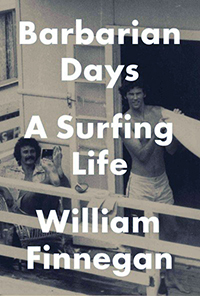

The sense of oneness achieved in the ocean is so strong that the temptation to let everything else slide can lead, eventually, to dereliction. Nevertheless, he recognises a shared potential for addiction: a hunger for mightier waves, more juice, a bigger rush.

In Honolua, Hawaii, he comes a major cropper while surfing on acid, but by the standards of the time he is a more cautious drug-taker than wave-catcher. All I wanted from my body was for it to paddle faster and surf better.”īy then, he’s in the midst of a global pilgrimage – aka bumming around the world and searching for waves, tugged by the long withdrawing roar of the quest for self-transcendence that characterised the Age of Aquarius of the 60s and 70s. “I had no interest in any of this at the time.

Routine injuries merit barely a mention until, in Australia in 1978, he looks around and sees, as if in a mirror, how he is “destroying” his body through surfing. In the ocean, there are plenty of occasions when he is, in the surfer’s lexicon, rag-dolled, held under or axed by the wave’s lip. He won’t claim it toughened him up, but it perhaps prepared him for his adult life reporting from war zones and, in Cold New World, from the frontline of American poverty. Corporal punishment at home is the norm, making him conscious, in retrospect, “of the ambient low-grade violence I lived in as a mid-century child”.

While learning to harness the violence of the waves, Bill is constantly getting into racialised fights at and after school. Then 13, Bill was soon spending all his free time in the ocean, where “everything… was disturbingly interlaced with everything else”. To this fully qualified outsider – I live by the ocean without ever having set thigh in it, but I have seen Point Break three times – Barbarian Days gradually assumes the form of a hefty masterpiece.įinnegan learned to surf in southern California but got his big break after his dad’s work took the family to Hawaii in 1966. Having taken a full seven years to complete, the novella-length piece was eventually published in the New Yorker, where it quickly gained classic status among surfers and readers alike – the two are stereotypically if not mutually exclusive. W hen William Finnegan was struggling to write an article about the San Francisco surf scene in the 1980s he found himself “wondering how much of the thing I could hope to convey to outsiders”.


 0 kommentar(er)
0 kommentar(er)
